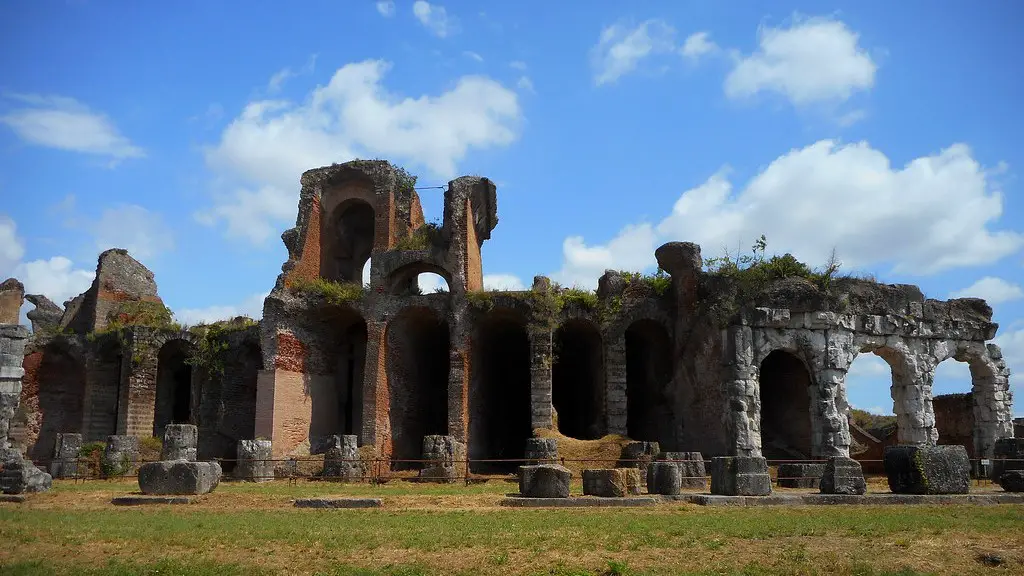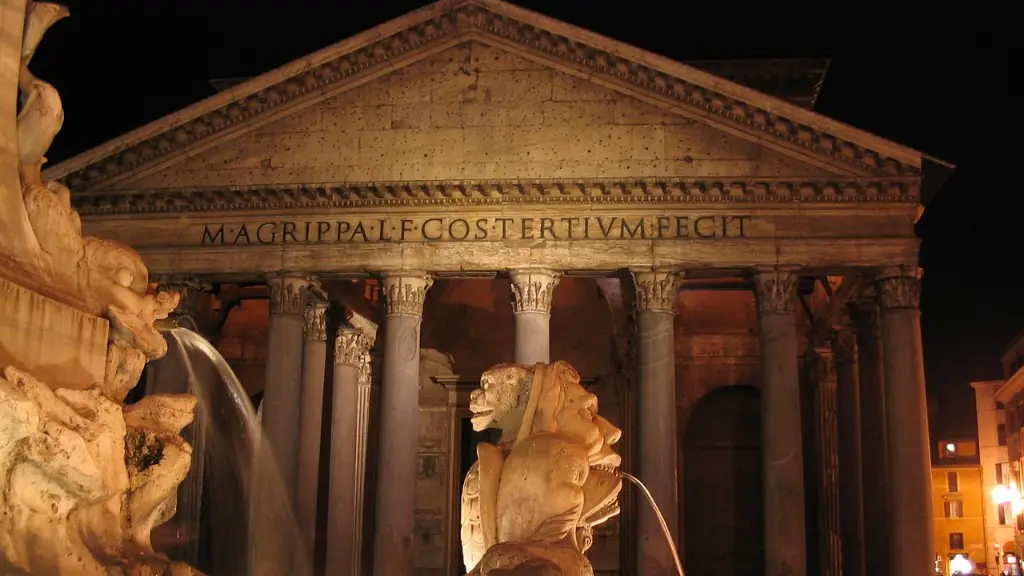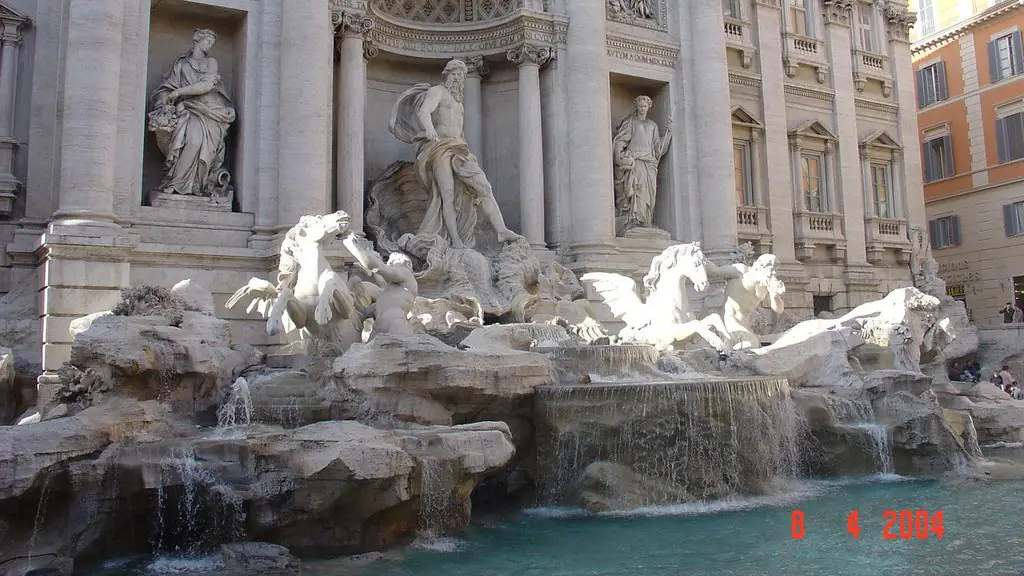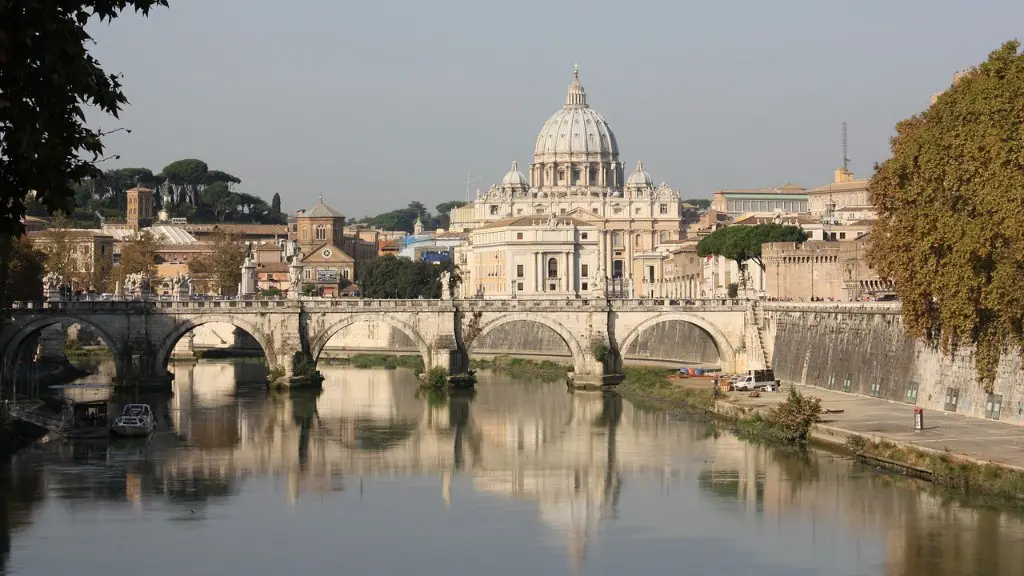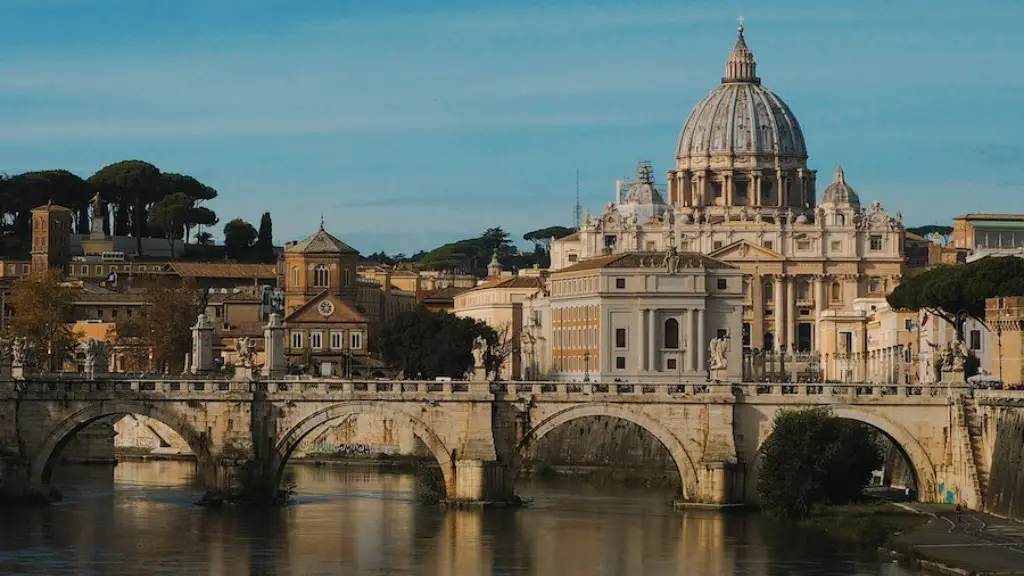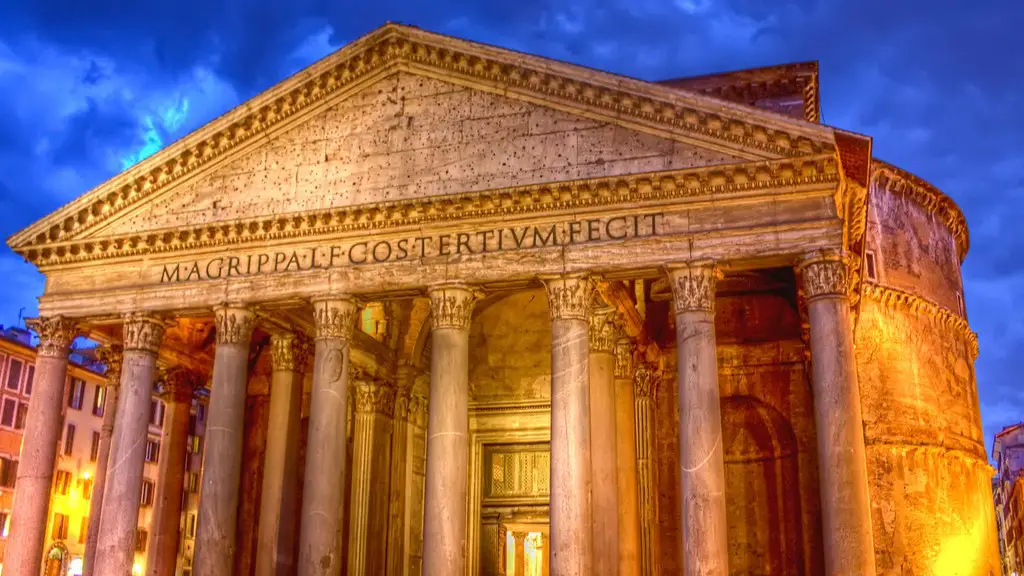Historical records tell us that Ancient Rome was founded in 753 BC. However, until recently, little was known about the details of its construction. Recent archaeological discoveries have helped to shed light on the development of Rome and the processes behind its construction.
Archaeologists and historians are now in agreement that Rome was initially built on seven hills. This was then followed by the gradual expansion of the city to encompass the known 39 hills. It is believed that the first structures were built on the Palatine Hill, one of the seven original hills, by the Latins and Sabines who were the first settlers of Rome in the 8th century BC.
The first walls of Rome were constructed in the 5th century BC, as protection against invaders. This original wall was built of stone, and followed the contours of the hills. It was constantly being modified, extended and strengthened over the centuries. By the time of the Pax Romana, the city walls had been upgraded to a double wall filled with rubble. In addition, a series of triangular fortifications and turrets were built to defend the walls.
Over the centuries, the city was gradually extended and redeveloped with public and commercial buildings such as marble temples and baths. The forums, or public squares, of ancient Rome were part of early commercial activity and connected the citizens to each other. Over the course of centuries, Rome was filled with sophisticated city blocks, diverse neighbourhoods, markets, rich houses and tombs.
It was during the era of the Roman republic and empire that much of the city of Rome was built. The Roman’s knew how to take advantage of the resources around them, and used wooden and marble bridges spanning the Tiber River, a road network connecting provinces, and a system of aqueducts to bring water to the city. Some of the most iconic structures such as the Colosseum and the Circus Maximus were built during this period.
The construction of Ancient Rome involved a high level of engineering skill, innovation, and labour. The resources used to build and maintain the city ranged from wood and stone, from the marble quarried from nearby mountains, and from the labour of hundreds of thousands of Romans, who attended to the construction, maintenance and upkeep of the city. Despite the vast amount of evidence found of its long and proud history, much of Ancient Rome still, today, remains a mystery.
Religion in Ancient Rome
Religion was an important part of the Roman culture, and played a significant role in both the construction and life of Ancient Rome. Every major god of Rome was associated with a temple, and many of the most iconic monuments and temples were built to honour a deity. Many deities, such as Jupiter and Juno, were dedicated with their own temples, such as the Temple of Jupiter Optimus Maximus, which was the most important temple in the Roman religion.
Beside the temples, many religious processions and ceremonies were held in the city. The Vestal Virgins were involved in many religious festivities, while the public was regularly invited to attend the games, which was in honour of the gods and goddesses. Religion played a crucial role in the culture, and was present in every aspect of life in Ancient Rome.
These gods and goddesses were also considered to be patrons of the Roman state itself. For example, Jupiter was considered to be the father of gods and the protector of Rome, while Juno was the protector of women. This idea helped to legitimise and strengthen the power of the Roman state with its own religious mythology and symbolism.
Religion also provided spiritual and psychological connections between the citizens of Rome. People celebrated the gods and goddesses in the month of festivities and rituals to form a common bond among all Roman citizens. These rituals showed the importance of religion in the daily lives of the people.The rise and fall of Ancient Rome
The rise of the city of Rome was nothing short of impressive. From a small settlement on the Palatine Hill, it grew to become the imperial capital of the greatest empire of the ancient world by the 2nd century AD. Rome was a symbol of power and grandeur, serving as the catalyst for Western civilisation.
The Roman Empire lasted until the 5th century AD, however, its decline had already begun in the 3rd century. Political chaos and civil wars, combined with continued external threats, resulted in a decline in the strength of the empire and a decline in its ability to maintain its territories.
In the 5th century AD, the Visigoths invaded and sacked Rome, leading to its decline and fall. After the fall of Rome, much of the knowledge, architecture, and parts of the city were destroyed, and a shift in power from Rome to Constantinople began.
The fall of the Roman Empire marked the end of the era of grandiose architecture, as much of the city was left to ruins. However, Rome was not obliterated and some of the structures still stand today, including the Colosseum and the Circus Maximus, as reminders of its long and majestic past.
The Legacy of Ancient Rome
The legacy of Ancient Rome is seen in all aspects of modern society and culture. The Romans left behind a legacy that has undoubtably influenced the way we think and do today. The Romans are credited with having introduced a sophisticated form of government, with a civil service, codified laws, and a sophisticated education system.
Ancient Rome also set the stage for modern Western culture. Elements such as language, literature, art, architecture, engineering and mathematics, were all pioneered by the Ancient Romans. The Roman language, Latin, is still the basis of several modern languages, while the city’s architecture and infrastructure served as the blueprint for modern cities.
The Ancient Roman empire also set the precedent for modern day political institutions, such as the United Nations. The Romans introduced the concept of a single and unified political system, with a centre of power, and governors with absolute authority. This paved the way for the rise of modern nation states, government systems and international organisations.
Finally, the legacy of Ancient Rome is also evident in its art.Ancient Roman art was highly influential and has been emulated throughout the centuries. Its iconic sculptures, mosaic artwork, mosaics, murals and frescoes, and even literature, have been adopted and adapted by modern-day artists and designers. From the cities to the seas, from the public architecture to the art works, from literature to music, from the ideas of philosophy to warfare and politics, Ancient Rome has left a vast and lasting legacy.
The Impact of Ancient Rome on the Mediterranean
The impact of Ancient Rome on the Mediterranean was immense. The city of Rome became the centre of the Mediterranean trade networks, and merchants often sought out the city as a market for their goods. The capital also became an important hub for industries such as banking, military equipment, and textiles.
Rome’s influence extended far beyond the Mediterranean, and it was the focal point of many cultural, religious, political and economic exchanges. As the centre of the former Roman empire, the city was exposed to all kinds of traders, travellers, and ambassadors from across the world. This exchange of goods, ideas, and people created an atmosphere of cultural, religious and linguistic exchange, which continues to influence the modern world today.
The Romans also had a huge impact on the architecture of the region, which can still be seen in the cities of the Mediterranean today. Roman engineering was highly advanced and the Romans created a vast network of roads and infrastructure, which allowed for the movement of goods and people throughout the region.
The Romans also developed an extensive education system and built an impressive public library in Rome, making it a hub of knowledge and learning. This library was one of the sources of the vast cultural knowledge and literature that was spread throughout Europe. Rome also had a major impact on the region’s culture, with Roman religion and customs emerging as a result of the empire’s expansion and being adopted by the people of the Mediterranean.
The Economic Impact of Ancient Rome
The economic impact of Ancient Rome was far reaching, and even today the legacy of Rome can still be seen in the global economy. Ancient Rome developed an expansive monetary system, allowing for a more fair and efficient exchange of goods and services. This monetary system helped to facilitate public works and the growth of commerce, with an effective infrastructure used for the circulation of money.
The Romans also developed an extensive trade network which allowed them to acquire the natural resources needed for their construction projects and for the production of goods for their military and for other citizens. This trading network encouraged the spread of ideas and knowledge throughout the region, and helped to foster the growth of a highly sophisticated society.
Another key contribution of Ancient Rome to the current world economy was the development of taxation. Rome was the first city-state to introduce a sophisticated taxation system, and while the taxes themselves were heavy at the time, they allowed the government to finance public works and services. This system of taxation is still in use today and is vital for the functioning of any modern economy.
Ancient Rome also played a major role in the development of a number of economies, such as its own, as well as those in Africa, the Middle East and Europe. The Roman Empire encouraged the spread of technology, culture and ideas, and many of these developments have become vital components of the global economy today.
